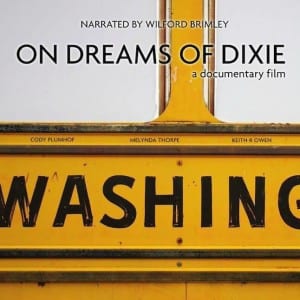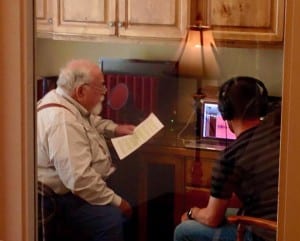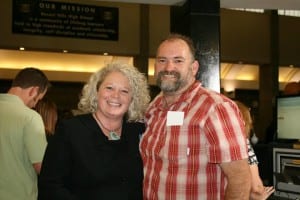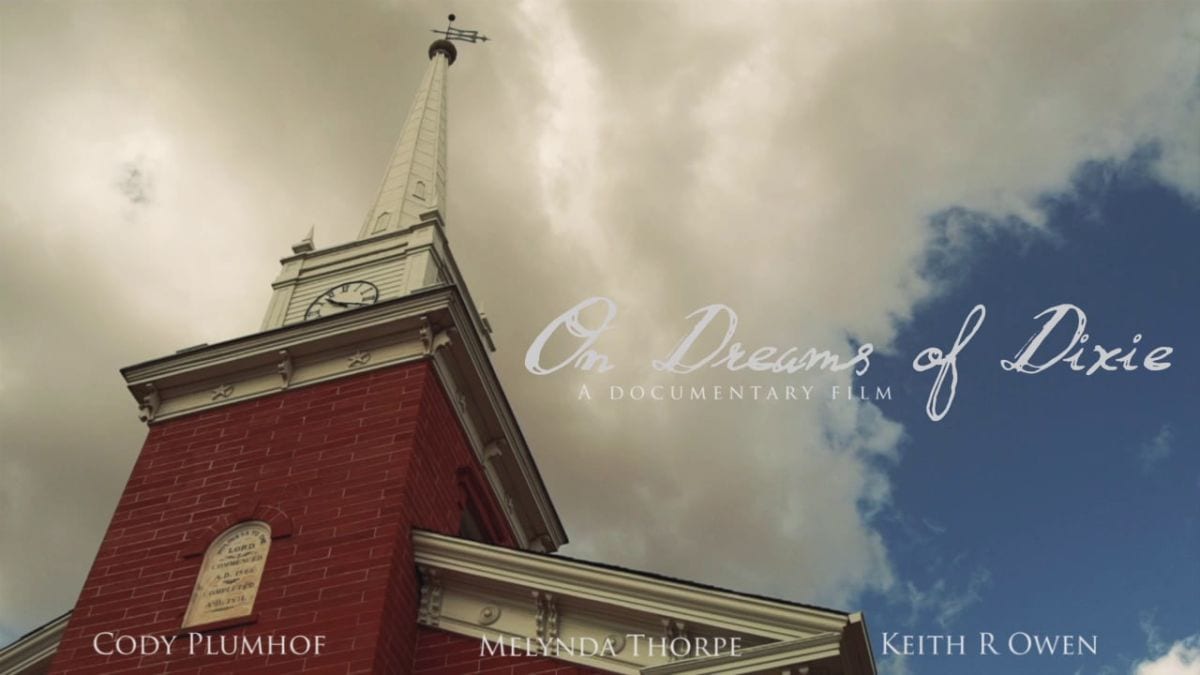
The documentary, “On Dreams of Dixie,” recently held its world premier opening at Desert Hills High School. The event was a tremendous success, creating a nostalgic occasion in bringing together community members from all walks of life. However, it wasn’t just the “hoopla” and “circumstance” that made the night special. The documentary film delivered the spectacular finale to the evening with a magical screen display.
The film is a collaboration of highly talented professionals coming together to make a world class documentary about this history of education in southern Utah. Melynda Thorpe is the film’s writer, producer, and documentarian. Keith R. Owen is the director. Cody Plumhof is the executive producer. Their efforts, love, and dedication has resulted in the film getting international exposure.
DOCUTAH 2015 International Documentary Film Festival selected “On Dreams of Dixie” out of 400 submissions as part of the 77 featured in the lineup. DOCUTAH is hosted by Dixie State University and runs Sep 8-12. There will be three opportunities to view the documentary during DOCUTAH: Sep 9. at 7 p.m., Sep 11. at 4 p.m., and Sep 12. at 12 p.m. The “On Dreams of Dixie” documentary film trailer allows a peek into what is in store.

The heartwarming history of education in southern Utah demonstrates the vital importance of education within the community. The film shows that through the weaving of school, work and play, communities grow and prosper. “On Dreams of Dixie” showcases the past, present, and future of educating a community.
“On Dreams of Dixie” is a film that commemorates the centennial anniversary of the Washington County School District. The film uses personal interviews, photos, and recorded accounts found in local archives, creating a character-driven account of the evolution of southern Utah schools. Established in 1915, the district celebrates 100 years of public education. However, the documentary also offers a heartfelt glimpse in the years proceeding the formal creation of the Washington County School District. The film reaches all the way back to tell the story of people and events of dedicated pioneers that arrived to a once harsh and barren red desert.

Wilford Brimley offers his voice as narrator for the film. Brimley’s deep, smooth voice offers a calming, familiar sound that immediately allows viewers to settle in comfortably. Those that have not attended school in Washington County will find the narration both informative and engaging. Viewers who have attended school within the district, will find the narration allows them to easily be transported into a near child-like state of mind. A trip back in time as they reminisce about their own childhood school days.

The film opens up with Brimley sharing a nostalgic account from Jeffrey R. Holland attributing most of his success to his educational experience as a child in Washington County. Holland is also interviewed and states that his entire childhood education took place within a 75 yard radius. Both in word and demeanor, it is obvious Holland has fond memories and high regard for the educational system in Washington County.
“On Dreams of Dixie” reaches back to 1861 when tattered pioneers began arriving to settle the area. Many fresh from long journeys across the ocean and the plains were weary travelers. Yet they were eagerly optimistic and determined to serve their church in establishing the area. These pioneers endured great hardships and worked tirelessly to create a community out of the barren desert. Education was important from the start. With no buildings to house students, school was taught out of the back of covered wagons in the beginning.
In 1862, St. George was officially chartered. By 1864, the population had grown to nearly 700. The first state-funded school building was built in Virgin. By the time the school was built, the population had grown to 4,000. When the tabernacle was built and became operational, many were excited to utilize the large basement for educational purposes. However, heating, lack of ventilation, and poor lighting proved to be insurmountable. A two-cent tax increase was instituted to fund the cost of building a suitable school building in the center of town. In 1901, Woodward school was opened for the sole purpose of centralizing and modernizing education. Continued growth meant more schools being built in the area. In 1915, the State of Utah ordered the scattered school districts throughout the area to consolidate into one unified school district.

As the film continues, a host of stories are recounted through narration, photos, journals, and personal interviews. Being able to intertwine not only the changes within the school district but also the growing community around it is what makes the “On Dreams of Dixie” so appealing. The events that have shaped the community have also impacted the evolution of the school district. Growth, school rivalries, commerce, highways, and wars have all been hugely influential on the educational system in southern Utah.
With 100 years of the school district to account for, plus the fifty-four years prior, it is impossible to include every important educator, story, and highlight in “On Dreams of Dixie.” However, the ones showcased are broad and moving. Viewers would be hard pressed not to have their school era and memories mentioned. It is easy to see why so many are identifying with the film.
So many people have been touched by the influence of educators. While “On Dreams of Dixie” was only able to feature just a handful of personal stories, there are many more to tell. Remembering a favorite teacher, experience, or time from our youth can be a real joy. Those wishing to share a personal story are encouraged to so at ondreamsofdixie.com/stories.

Author’s note: I found myself fascinated with the film. It was educational and entertaining. I found myself feeling the emotion of the story. On “Dreams of Dixie” moved me. It took me to a place before my time and provided insight to what it took to bring education to the area: what it took to build it, how the school district is really a community member, if you will, that adapts to the ongoing changes within the community. It took me on a stroll down memory lane as I found myself recalling many of my own experiences. It showed me what has been continuing to happen. It allowed me another perspective on what is transpiring now as my own children are attending school within the district. It allowed my son and me to bond as we watched the film together. It provided us an opportunity to continue the conversation outside the showing and discuss further. To have a reluctant preteen attend a documentary on a Saturday evening while still trying to capture the last remaining days of summer and admit to liking it … I’d say that’s a sure sign of success!






I can’t wait to see it.